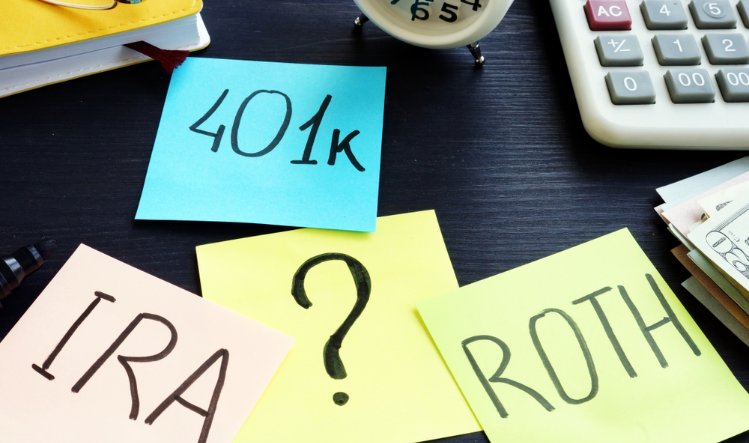If you are reading this article in 2023, you should have already filed your 1040 or at least filed an extension for the 2022 taxable year. The good news is that if you are self-employed, you still have the opportunity to put away up to $61,000 or $67,500 in Roth funds via the “Mega Backdoor Roth Solo 401(k) strategy.
This article will explore the rules for utilizing the backdoor via a Solo 401(k) to maximize your after-tax contributions to your retirement plan.
- Anyone who is self employed can setup a Solo 401(k) plan
- If you want to accumulate tax-free retirement savings, you can utilize the Backdoor Roth 401(k) strategy
- If you filed an extension to your tax return, you still have time to go through the backdoor and supersize your Roth for 2022
Can I Set Up a Solo 401(k) Plan?
The first question you need to answer is whether or not you are eligible for the plan. In general, if you are self-employed or have a small business with no non-owner full-time employees, you can establish a Solo 401(k) plan. In fact, the business can take any form, including a sole proprietor, LLC, partnership, C Corporation, S corporation, charity, and much more. Essentially, you must have the presence of self-employment activity and an absence of full-time employees. Assuming you fit these two requirements, you can start a Solo 401(k) plan for your business.
Can I Still Set-up a Solo 401(k) for the 2022 Taxable Year?
Thanks to the original SECURE Act, beginning in 2020, a business can establish a Solo 401(k) plan in a current year and still make some contributions for the previous year. For example, one can establish the plan in 2023 and still make contribution for the 2022 taxable year. The only stipulation is that in such a scenario, only employer profit sharing contributions can be made for 2022, not employee deferrals. However, since “after-tax” contributions are not categorized as either “employee deferral” or “employer profit sharing,” they can be made as part of the Mega Backdoor Roth Solo 401(k). Obviously, you must have filed an extension for your tax return to contribute for last year.
The Mega Backdoor Roth Solution
The advantage of the Backdoor Roth for the self-employed is that one can supercharge his or her Roth contributions; you may put away almost ten times the annual amount you can directly contribute to a Roth IRA. So long as you are over the age of 59 1/2 and the Roth has been opened at least five years, all distributions would be tax free.
How Does it Work?
The Mega Backdoor Roth option can generally only be used by Solo 401(k) participants because the plan is not subject to ERISA testing. Whereas with a 401(k) plan with non-owner employees, enough rank-and-file employees would need to choose to do a Mega Backdoor Roth contribution, which rarely happens. In other words, if too many highly compensated employees elect to make Mega Backdoor Roth contributions in relation to rank-and-file employees, the plan would fail the ERISA test and the contribution would be disallowed.
Under the strategy, a plan participant can make after-tax contributions up to a maximum of $61,000 or $67,500 if at least age 50, for 2022. The plan participant must have sufficient earned income (Schedule C net income) or W-2 income to make the after-tax contribution. One cannot contribute to a plan more than they earn. For example, if a plan participant made net $50,000 on his Schedule C, the after-tax contributions could not exceed that amount. Note – you may not be able to contribute the entire amount earned as income as the contribution must be net of social security and Medicare taxes.
Hence, assuming the plan participant had $100,000 of net Schedule C income, he or she would be able to max out his or her 401(k) contribution for 2022. After contributing the after-tax funds to the plan, they could be immediately converted to Roth. An alternative is to roll those funds to an IRA, and then convert that to a Roth IRA. The conversion would not be subject to tax. A 1099-R would be filed to report the after-tax conversion to the IRS, but no tax would be due (IRA Financial handles this and all Solo 401(k) plan administration).
As we mentioned earlier, after-tax contributions are not considered either employee deferral or employer profit sharing contributions and are, thus, not subject to the 401(k) plan triggering rules. Therefore, you are allowed to move those funds from the plan. Pretax and Roth contributions cannot be moved out of the plan until you are separated from that employer, the plan is terminated, or you reach age 59 1/2 (all types of triggering events).
Roth IRA Distribution Rules
Prior to IRS Notice 2014-54, doing a Mega Backdoor Roth IRA was not as attractive as there was some uncertainty as to how the after-tax 401(k) funds could be rolled over to a Roth IRA. The Notice clarified this rule and allowed the pretax and after-tax funds that were distributed from a plan on a pro-rata basis to be separated once a distribution is made. This opened the door to the Mega Backdoor Roth Solo 401(k) strategy.
Conclusion
Thanks to the SECURE Act, one can establish a Solo 401(k) plan after Tax Day, so long as an extension was filed, and take advantage of the Mega Backdoor Roth Solo 401(k) strategy in 2023 for the 2022 taxable year. Of course, you can always do the structure during the current year at any point. Just bear in mind that you must first must meet the eligibility requirements of the plan, the contributions must be made in after-tax funds, and then you should immediately convert them to Roth to avoid any extra taxes or penalties. It’s a brilliant strategy to make the most of Roth-type retirement plans, whether you wish to keep them in your 401(k) or roll them into an IRA. IRA Financial experts can walk you through the entire process and get you set up.













